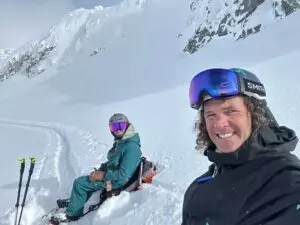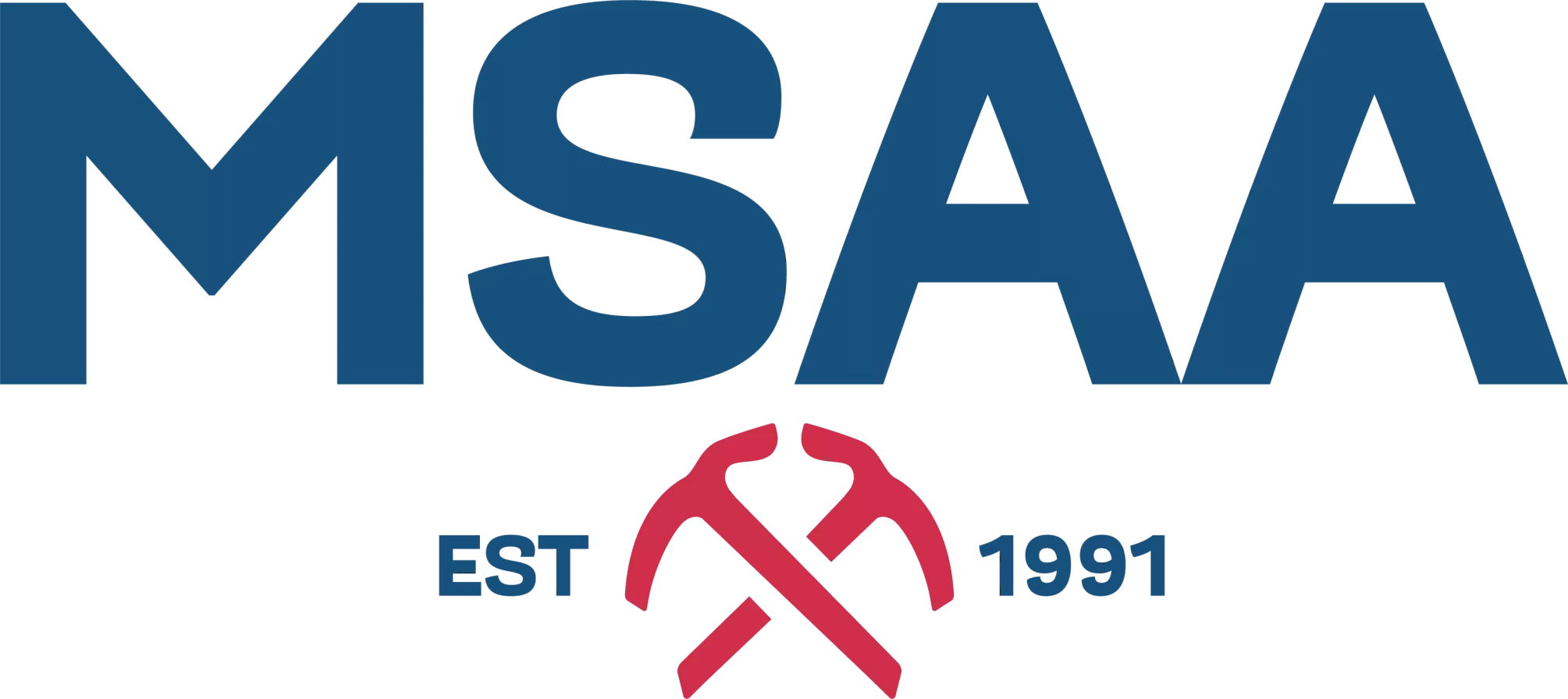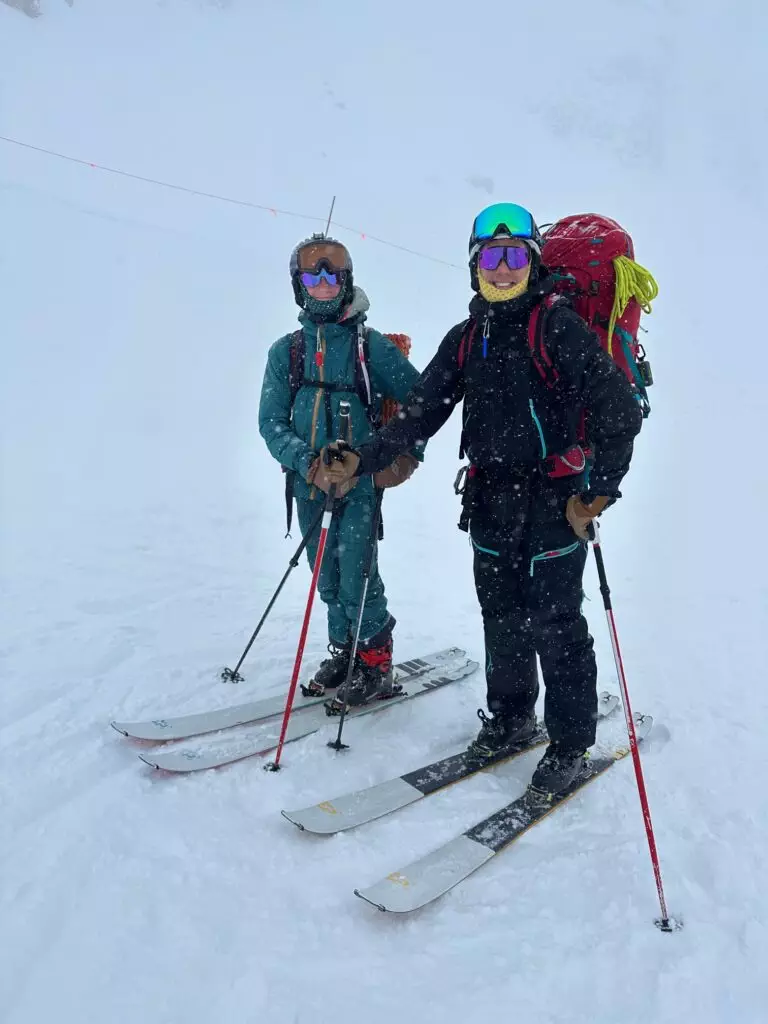On March 7th, Rowan (13) and I started a three-day Spearhead Traverse; in his fifth season of touring, Rowan has experience with overnight tours, is a strong skier, and we decided in the fall that a Spearhead Traverse would be an ambitious but appropriate goal for 2022/23. We spent the months leading up to March touring and resort skiing with a number of days dedicated to Spearhead preparation: consecutive, extended touring days with full packs and as much vertical as we could manage.

Timing a three-day traverse requires aligning weather, snow stability and glacial coverage, available daylight, and personal schedules. Early March had been our intended window for a few reasons, and when three days of “cloudy with sunny periods” coincided with Avalanche Canada ratings of considerable or less (and problems we could manage), it was time to pack and go!
What we encountered was three days of variable visibility, with occasional clear skies to absolute whiteouts, the latter fortunately not during some of the more dangerous sections of travel. In spite of departing on a Sunday morning in what’s arguably a global Mecca for touring, we didn’t see another person or ski track after Circle Lake until we neared Kees and Claire Hut on Tuesday evening. In general, the snow was between boot- and butt-deep on almost every aspect other than wind-scoured cols, which sounds great, but made for difficult and slow travel. Fortunately, the snowpack was mostly right-side-up with F-4F storm snow sitting and bonded to a well-consolidated base.
After navigating Circle and Decker Lakes in zero visibility, we rolled over Decker Shoulder and into the sun on Trorey Glacier, and opted for the lower route over the ridge between Mount Pattison and Trorey Side. The short bootpack over the ridge presented the first significant hurdle of the trip: an hour of wallowing and making 2” of progress with every 18” step. We evaluated conditions on the ridge, eyeing the last easy exit option down Trorey Gl, but agreed to press forward and spent night one on the Tremor Glacier.

Day two started with more brilliant sun for the ascent of Tremor, a route that meanders to avoid two crevassed convexities, and ends with another steep bootpack. Our excitement over kicking perfect steps into pencil-hardness snow quickly disappeared when the surface changed to boilerplate ice for the final 20m. I kicked my way up out of determination, injuring a big toe in the process, and belayed Rowan from the top (we donned harnesses at East Col and wore them any time we were moving). Crossing Platform Glacier is one of the more mellow sections in terms of effort, however with a GIANT wind scoop along the NE side and crevassed ice fall to the SW we were exceedingly grateful for good visibility. Within the few steps it takes to cross from the Plaform Gl to the Ripsaw, the visibility changed from good to almost zero, and with a layer of storm snow almost to my waist, the descent to access the Naden Glacier was trudging with skins on and constantly checking our GPS. Several steep chutes provide access from Ripsaw to Naden, and with no previous tracks for reference, we picked one and hoped for the best! What sounded like rock strikes through the shallow steeps was fortunately a thick lens of ice over the stone below. Energized by the proximity to our second camp, crossing Naden was uneventful and seemed to fly by, and cresting Couloir Ridge we could see Iago and its glacier. Strong easterly winds buffeted the windward aspect of the ridge joining Couloir and Iago, but swirled around the col and sub peaks leaving virtually no truly sheltered spots. We spent the better part of an hour excavating a walled-in spot for the tent, and while protected from the full force of the winds, the tent shook through the night and had me awake with nerves about the following day’s conditions.

We woke to broken skies, warmer temperatures, and a few quick stability tests confirmed AvCan’s downgrade of ALP hazard to Moderate; a huge bonus as traversing several potential start zones saved us hours of detours. We crossed the upper edge of the Iago Gl which had developed a thin MF lens and released several Sz .5-1 sloughs, but nothing that propagated or stepped down. The energizing thoughts of wrapping up in a few hours would be soon offset by the day’s coming obstacles- physical and mental. The ascent of Iago is not difficult in the scope of the trip, but a whiteout had us on an endless stair master, trudging with tired legs into the white with no objective in sight. Presented with another game of “pick the chute” albeit in brutally low visibility, Rowan watched me roll into our selected line and promptly fall off an invisible 2m cornice. The steep upper edge of the Diavolo Gl provided some of the trip’s best turns: bottomless 4F snow, sweeping turns and face shots… joy that came to a crashing halt as we hit the climb to the Benvolio-Fitz Col. The upper zone of Diavolo Gl had the trip’s most variable snow, and with rapidly deteriorating visibility proved to be a test of both our mental and physical toughness. Stuck in a swirling cloud, we missed the ridge leading to Fitzimmons Peak and followed an adjacent rocky arrette until a brief moment of clear sky revealed us heading to Diavolo Pk instead of Benvolio. The detour back was miserable to navigate, and shallow rocky ridges with icy coatings under sugary facets forced us 180 degrees several times.

Hunkered in the wind tunnel of the Fitz-Benvolio Col, we refuelled, and took a moment to mentally reset for the next sections. The traverse of the Fitz Glacier was a downhill wallow even on wide skis, and we gained the Overlord Gendarme and Step low on gas and daylight, but breathing a sigh of relief to find the snow height sufficiently high to rappel the Step with a 30m alpine rope (saving a long detour though the heavily crevassed lower Overlord Gl). Be advised that although there is sufficient snow to don skis after 15m of rappel, there are still some hidden voids, like ones big enough to swallow a 195cm ski and the leg to which it’s attached… hypothetically of course.
Crossing under the giant cornices between Overlord and Refuse Pinnacle is always nerve wracking, but recent (12-24hr) car-to-house sized debris littering our route put a definite spring in our step. The skies began to clear revealing Blackcomb’s southern slopes in alpenglow as we crested the final climb to the Whirlwind Fissile Col, and we carefully skirted an enormous wind scoop at the SE corner of Fissile that would be a nasty surprise in low light. A penultimate descent towards Kees and Claire Hut provided more bottomless turns in blank snow, followed by admittedly envious stares at the Hut’s occupants enjoying dinner as we skinned past. I can’t think of a more fitting end to an epic three days that big sweeping turns down Cowboy Ridge under the glow of headlamps, finishing with a jello-legged exit down Singing Pass to arrive in the village at 2015hrs.

Some final thoughts: It was a hard three days between the deep snow slowing travel to a crawl, and the occasional whiteouts. We had planned three days with the intent to set up camp and ski a few laps with lighter packs, but we managed to slide into each camp with enough energy and daylight to set up, cook, and collapse. On one hand, if I had known how hard each day was going to be with the snow depth, I might have considered postponing, but alternately, snow stability was my highest priority and worked out in our favour, plus with no other travellers in sight, and no tracks to follow, we experienced the Spearhead Traverse in it’s purest form. Having to figure out and negotiate each section as it came, with no choice but to overcome and press forward provided Rowan with an experience unlike anything else we’ve skied. I would have been impressed by his ability to complete the Traverse under ideal circumstances, but I have a new sense of admiration and respect for his tenacity, endurance, and ability to get excited about skiing even in the most adverse and tiring circumstances.

Written by: Jonathan Gormick

